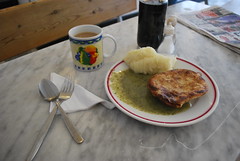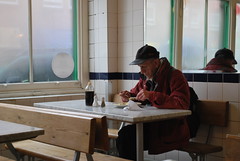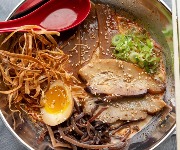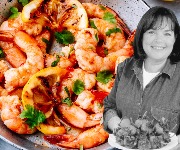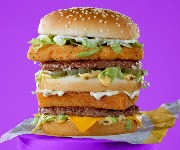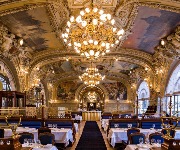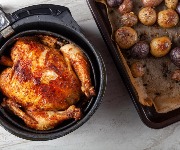Lunch in a traditional London pie and mash shop
Andrew Webb explores the history of the classic working class Londoners' staple dinner.
Recently I spoke on BBC Radio 4’s The Food Programme about pies (they are something of an obsession, dear reader). The venue for the recording was Cooke’s pie and mash shop in Hoxton. The shop, replete with tiled walls and sawdust on the floor, is owned by Joesph Cooke, and amongst the many topics we talked about besides pies were history, provenance, sustainability and community. While Joe and presenter Tim Hayward talked industrial oven equipment, I sipped my tea and thought about how these shops have changed over the past 100 years.
A short history of pie and mash
‘No one knows where the first pie and mash shop was, but it was probably an entrepreneurial pie man, traditionally found selling pies in the street who got enough money to open a shop,’ says Mal Vango who runs pie-and-mash.co.uk. The first pie and mash shops began to appear in the mid-nineteenth century in the east and south east of the capital, and historically pie, mash and jellied eels were the working class Londoners’ meal of choice.
What pie and mash should be
The standard pie features only minced beef – no carrots, onions or other additions and no preservatives, all made daily. The mash is nothing more than best quality maris piper potatoes, boiled and mashed, with perhaps a touch of salt. The final touch, and that which makes it truly a London dish, is parsley liquor. Traditionally, this was made with some of the water the eels had been stewed in, to which seasoning and plenty of parsley was added. The resulting green-flecked sauce is to pie and mash-loving southerners what mushy peas is to northerners. Today with eels being much rarer, this often isn’t the case. Indeed in Joe’s shop, eels – once a plentiful cheap food – now cost more than the pies.
‘Two and one’
There are various ways to eat pie and mash. Firstly the cutlery; some places offer a knife and fork, others a fork and spoon (Cooke’s is just such a place). Various rumours abound to explain this, from wartime metal shortages to stopping fights breaking out (the latter, and probably the former come to think of it, almost certainly made up). In Cooke’s I watched a cabbie come in and order ‘two and one’ (two pies and one scoop of mash). He took his food, fork and spoon and sat down. First the top of the pie was broken, then not so much liberal but hedonistic amounts of vinegar were splashed over the pies and the mash. He then set about the whole with his spoon.
Two peoples, one space
With the dissolution of the East End out to Essex and Kent, it would be all too easy for pie and mash shops to remain frozen by nostalgia, serving the memory of a community rather than the one outside the door. The docks, warehouses and factories, and people that worked in them have moved on, and so, it seems, have pie and mash shops. Nothing better illustrates this than the Seagrass restaurant, established by Ruaridh Emslie and chef Ian Sim. The restaurant serves British-inspired wild food like venison, mussels and fish. The venue, however, is the 100- year-old M. Manzes pie and mash Shop on Chapel Street, N1. It’s a modern British restaurant experience held inside a traditional pie and mash shop. To dine here is to see an area perfectly balanced between the old and the new. Chef Ian Sim has a hell of job in the kitchen; plates are heated in baking ovens, the pass is just a table with no usual heat lamps, and punters have to walk through it to get the toilets round the back. He loves it though, and what’s more the food is excellent.
There are now around 75 to 80 shops in London and the South East that sell pie and mash, and all seem to be doing a good trade. But it’s small beer when compared to the 7000 or so curry restaurants that can be found within the M25.
Do you have any memories of eating pie and mash?
Video: Pub pie scoops supreme champion at the British Pie Awards
Most Recent
Comments
Be the first to comment
Do you want to comment on this article? You need to be signed in for this feature
